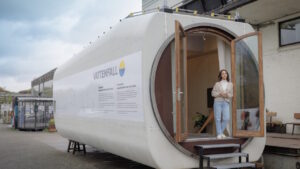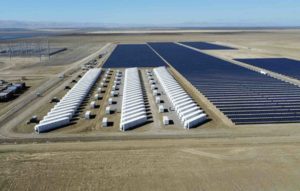Australia’s big solar industry is looks set to face yet another major development hurdle, with a new regulation in the works requiring the panel mounting, locating, fixing and removal on Queensland solar farms to be undertaken by licensed electricians only.
The new regulation, which is described on page 38 of the Queensland government’s new draft Code of Practice for the construction and operation of solar farms, also applies to all solar installations of 100kW and more and, essentially, prevents labourers from carrying out any work on basic PV panel installation.
RenewEconomy understands the rule has been fast-tracked by Queensland’s Office of Industrial Relations, despite the Clean Energy Council warning late last year that it could bring the state’s commercial and large-scale solar pipeline to a “grinding halt.”
In an email obtained by RenewEconomy, the Office Industrial Relations said the new “draft” rule addressed electrical safety risks associated a number of “key concerns” surrounding unlicensed workers mounting and removing solar panels at solar farms.
These included the risk of incorrect installation, resulting in latent safety risks, and the risk of serious incidents or injury during panel removal work, “especially where panels are damaged as a result of severe weather events.”
The email said the proposed regulation had been “progressed… to Governor-in-Council for approval as a matter of urgency,” in light of the anticipated and accelerating growth in the sector and the need to ensure “these known safety risks” were addressed.
The solar industry, however has immediately slammed the flagged change as excessive, unnecessary, and potentially devastating to developers, due to the “large and sharp increase” in electricians that would be required for solar farm construction.
“It’s akin to requiring an electrician to come and plug in your kettle every time you want to make a cup of tea,” said one solar farm developer, who chose to speak on background.
“That is a dealbreaker,” said one contractor. “The overcost (sic) would be roughly $3-4/panel in that case.” Others played down the price impact, but said it could be impossible to find electricians.
“It’s daft to require a sparky be the one who puts the panels on the structure and bolts it down, there is zero electrical work involved in that,” he said.
And it adds to a number of major challenges already dogging big solar developers around the country, including grid congestion problems, network connection delays, the reduction and variations in marginal loss factors, and lack of policy certainty.
In an email to members sent late last week, the Clean Energy Council said the Queensland government had not adequately demonstrated why this new and potentially devastating regulation was necessary, and had not consulted properly with industry.
“The CEC together with a handful of other peak bodies were provided with just 10 days to confidentially review the draft regulation and an accompanying Code of Practice prior to Christmas,” the email said.
“We urged the government to go through a proper regulatory impact assessment process, in line with its own guidance, if it was determined to progress the proposal further. We received no further communication from them about this until this announcement.”
Indeed, the CEC’s December letter to the OIR expressed “deep concerns” about the then proposed regulation, which it described as “excessive, unnecessary” and not supported by evidence through a robust regulatory impact assessment.
It explains that during the course of large-scale solar installations, labourers are used to unpack the panels, place them onto a mounting structure, align them in position and secure them onto the mount, awaiting the next phase, which is the electrical connection by a licensed electrical worker.
“The earthing continuity of each panel is tested by a licensed electrical worker at the electrical connection stage,” it says.
“The proposed new regulation as currently worded in the consultation draft would be very damaging to the solar industry in Queensland, which was already struggling to find enough electricians to complete the work on hand.
“Were there a requirement for the locating, mounting, fixing or removing of PV panels to be carried out by licensed electrical workers only, this would, increase the number of electricians required on a 100MW solar farm by in the order of an additional 45 electricians.
“Were the 1300MW of new utility solar generation capacity that were under construction in Queensland this year to have been subject to this new regulation, we estimate that the industry would have required in the order of 580 additional electricians to meet demand.
“This does not factor in the needs of the commercial rooftop sector, which would also be subject to the regulation for projects in excess of 100kW.
“And these numbers are only a taste of what would be required. In Queensland, over 5600MW of new large-scale renewable projects, most of it being solar, have reached financial close and are yet to be commissioned.”
The CEC argues that the panel work being done by labourers is prior to electrical cabling being installed between the modules and prior to the array being energised, and as such, “poses a negligible electrical safety risk to the worker.”
It also argues that licensed electrical workers, having invested four years of their working life in securing a qualification as a skilled tradesperson, would be “unlikely to be motivated or well-suited to repetitive manual labour which does not utilise their skillset.”
According to the OIR, the proposed regulation was approved by Governor-in-Council on April 4, 2019, and is scheduled to be applied as part of the code of practice on May 13, 2019, “noting the code of practice is still subject to final approval by Minister Grace.”









